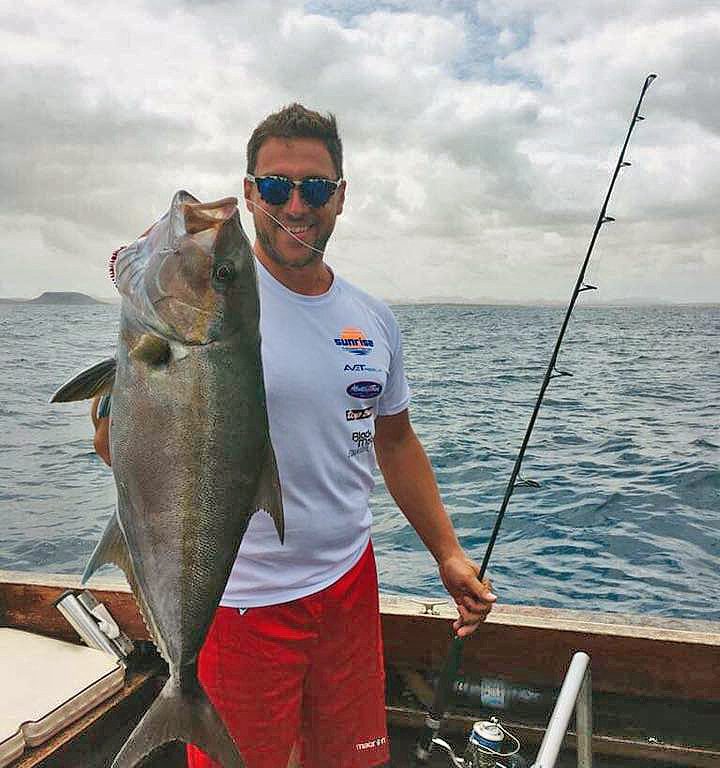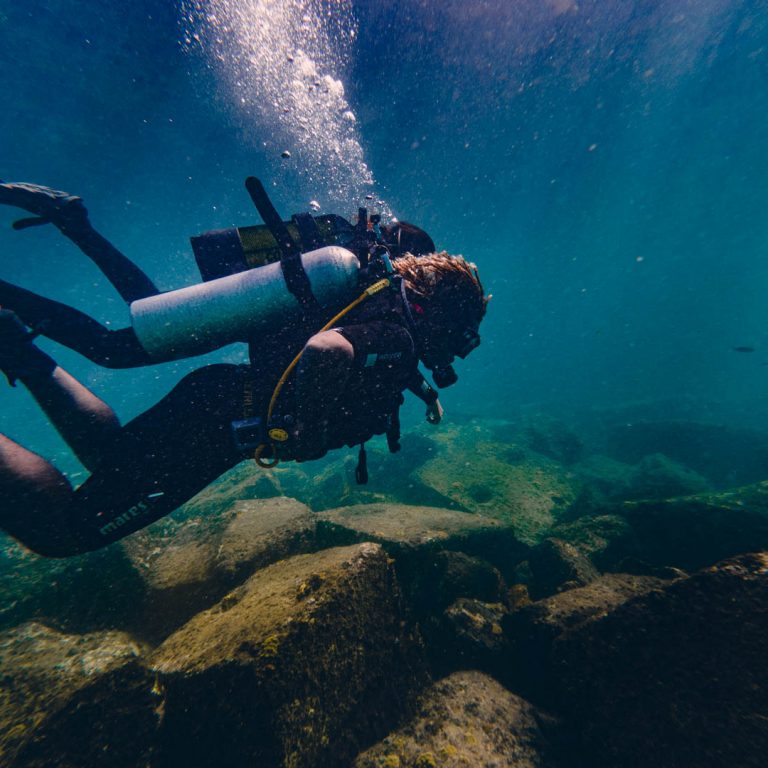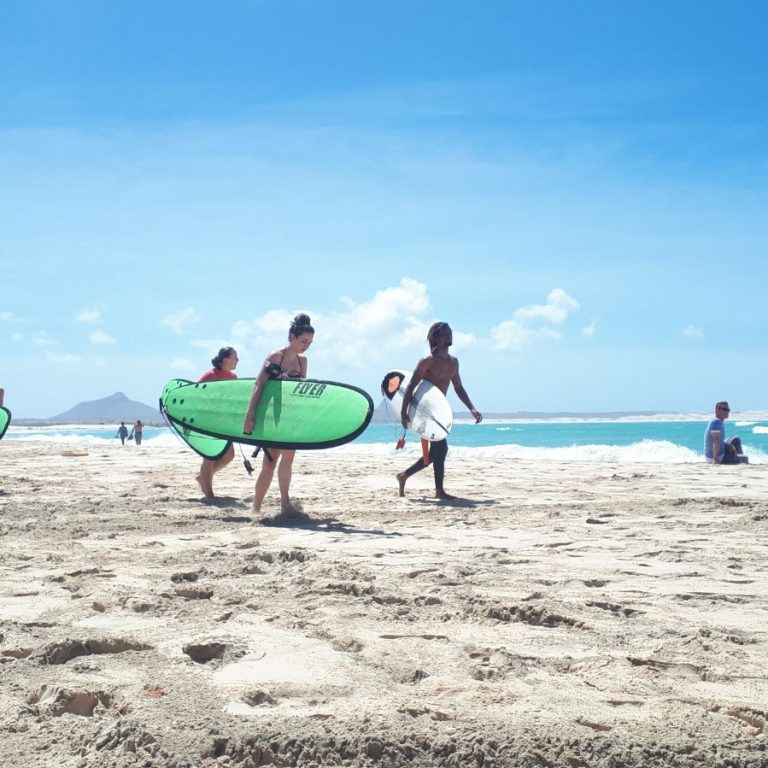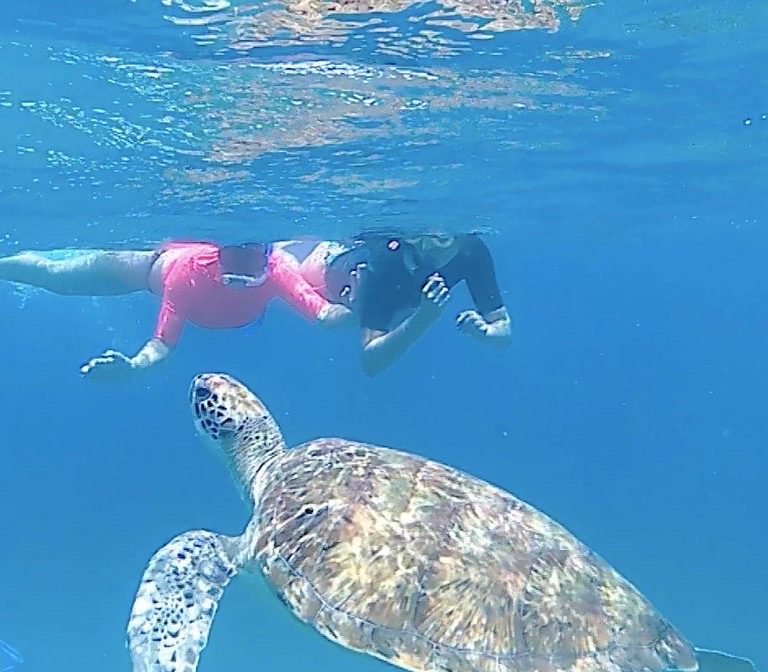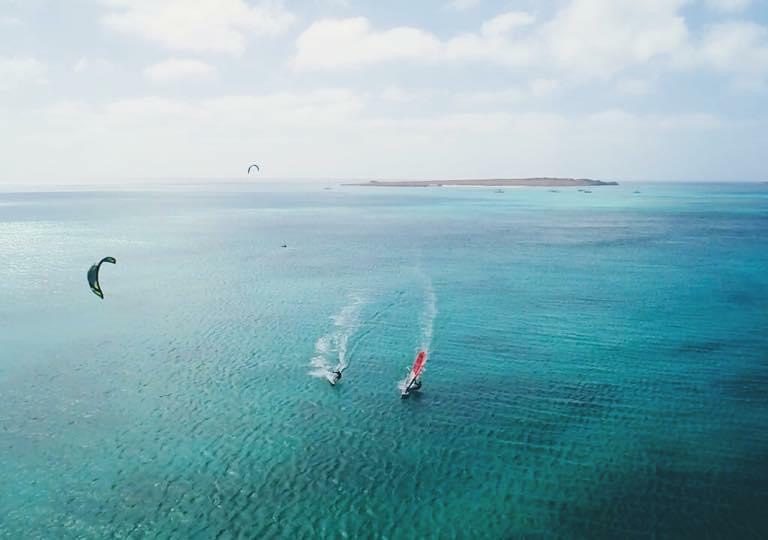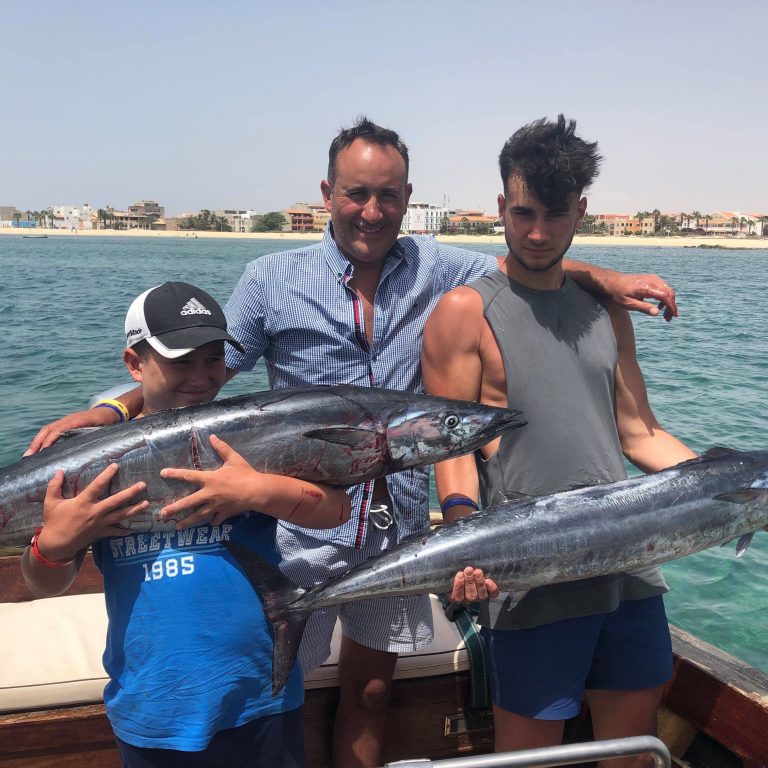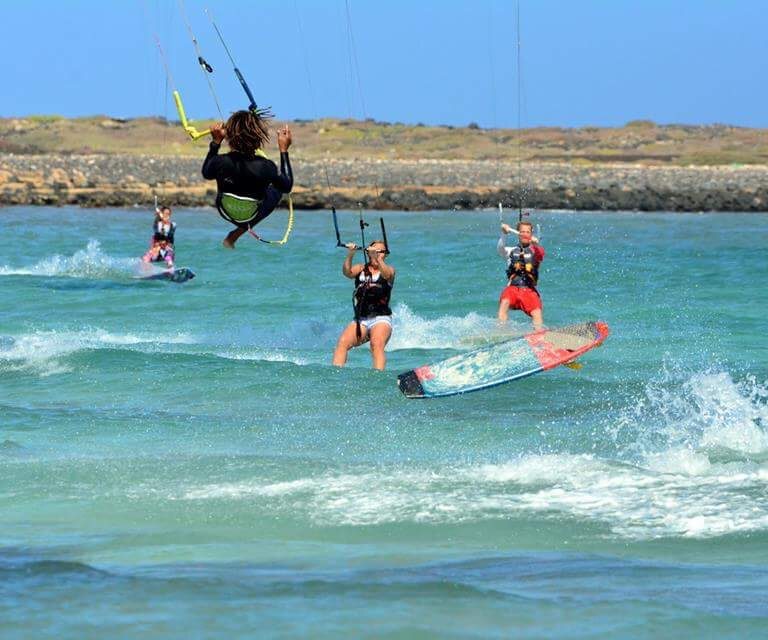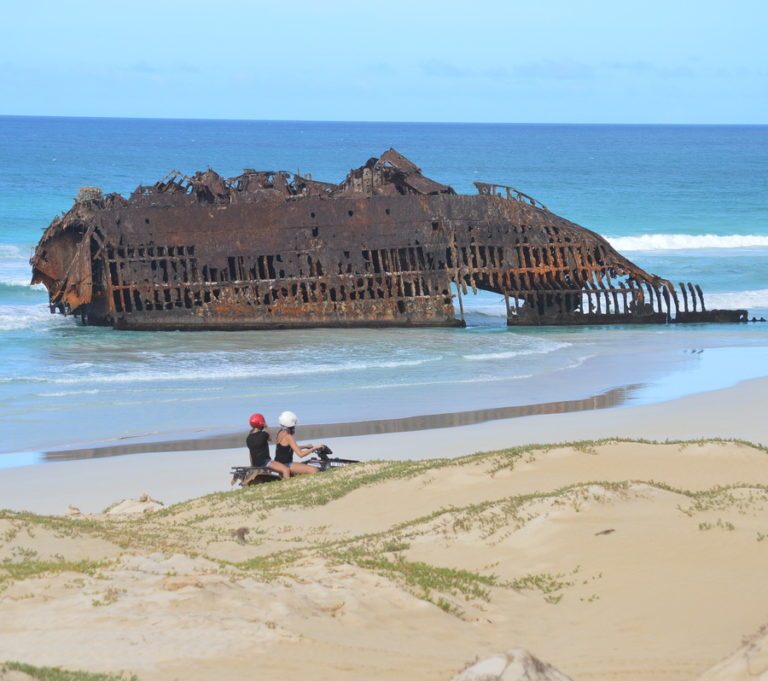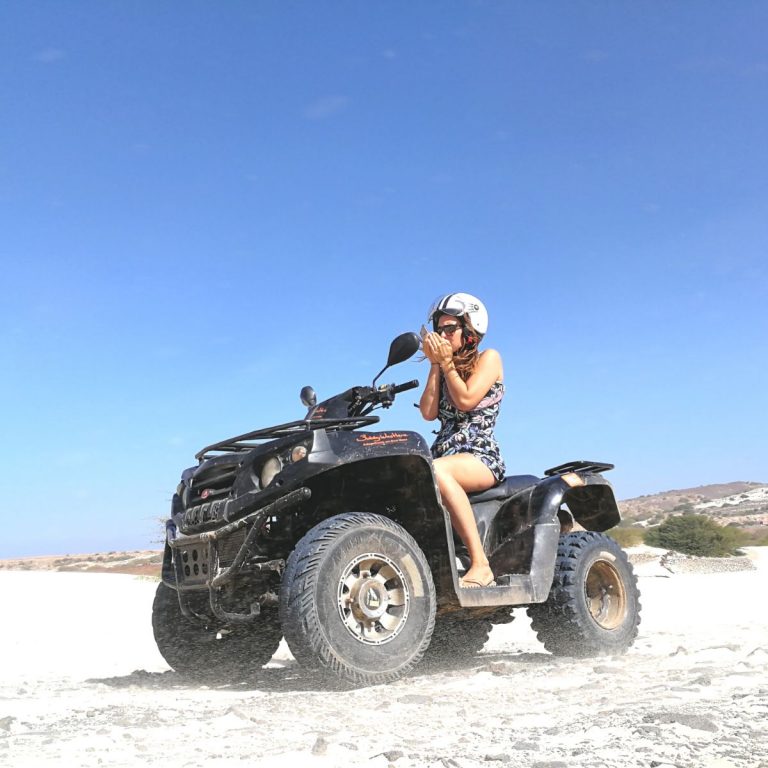Cabo Verde
The sub-tropical archipelago of Cabo Verde, just four hours from Europe is fast becoming the go to destination for a new breed of corporate nomad – seeking to take advantage of the year round temperate climate, low living costs, outdoor lifestyle and rich cultural diversity. With a dedicated remote working visa for up to 12 months – and no income tax payable it’s easy to see why.
Geography
Jutting up from the Atlantic seabed, some 300 miles (500km) west of Senegal, Cabo Verde offers a captivating blend of mountains, beaches, and peaceful seaside villages. The archipelago of ten islands (nine of which are inhabited) forms part of the Macaronesia ecoregion, along with the Azores, the Canary Islands, Madeira, and the Savage Isles. Each island has its individual charm and character making them all a must to explore.
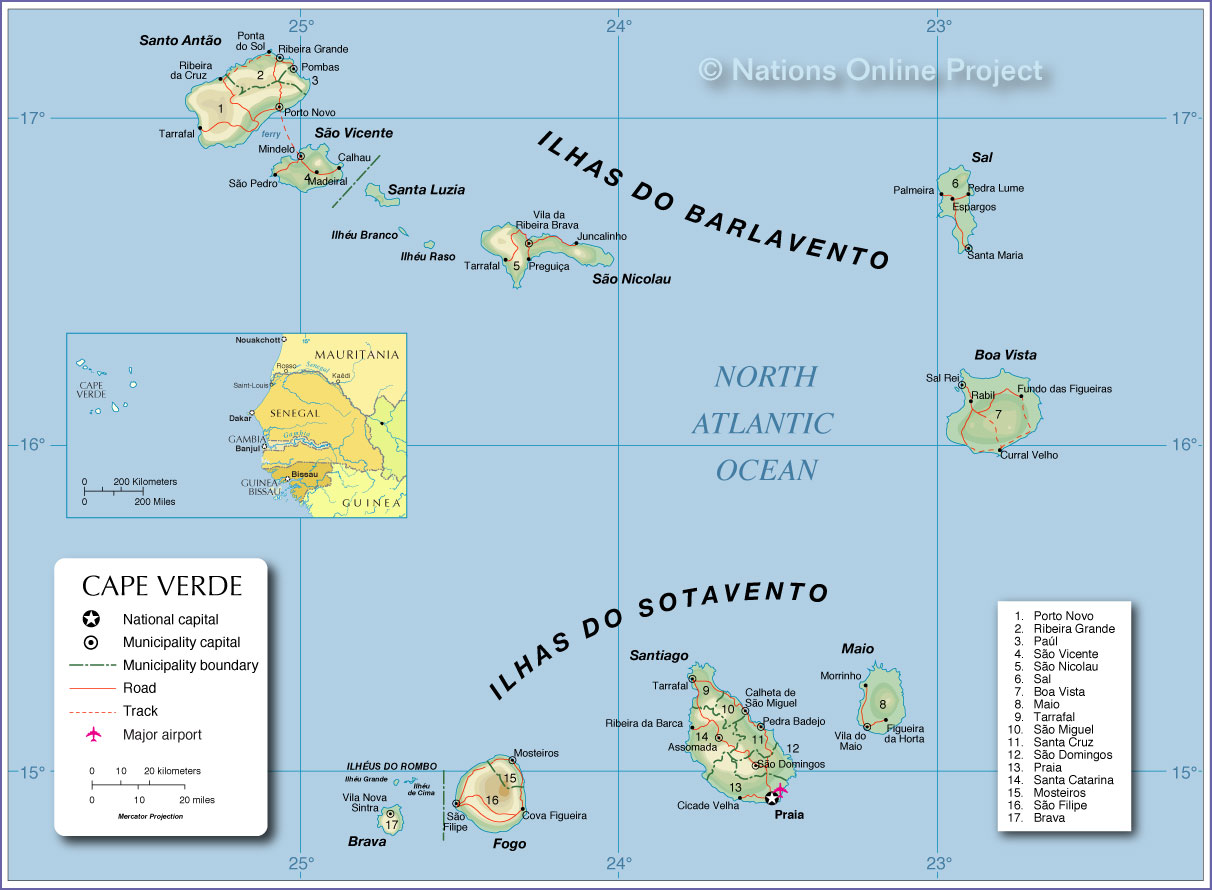
The islands are divided into two groups:
- The northern Barlavento (6 windward islands): Santo Antão, São Vicente, Santa Luzia (uninhabited), São Nicolau, Sal, Boa Vista; and
- The southern Sotavento (4 leeward islands): Maio, Santiago, Fogo, Brava.
Topgraphy varies from island to island with those in the east (Sal, Boa Vista, Maio) generally flatter and known for their long sandy beaches and deserts.
The western islands have steep cliffs, are mountainous and rockier. The highest peak is on Fogo, Pico do Fogo (2892m, an active volcano which last erupted in 2014. Much of the land in Cabo Verde is infertile with the country relying on imports for much of its produce.
Climate
Subtropical Cabo Verde experiences two main seasons – Tempo de Brisas (the windy season) from October to mid-July and Tempo das Chuvas (the rainy season) in August and September when temperatures can hit a high of 35 and sudden downpours deluge the westernmost isles. Daily annual temperatures typically vary between 24 and 30. The north-east trade winds blowing consistently from November to March make it a mecca for kite and wind surfers. The islands have given rise to a number of world champions – the most prolific of which is Mitu Monteiro.
Economy
Cabo Verde has few natural resources, and despite agricultural production on five of the islands (Santiago, Santo Antao, Sao Nicolau, Fogo and Brava), 90% of the food consumed in the archipelago is imported.
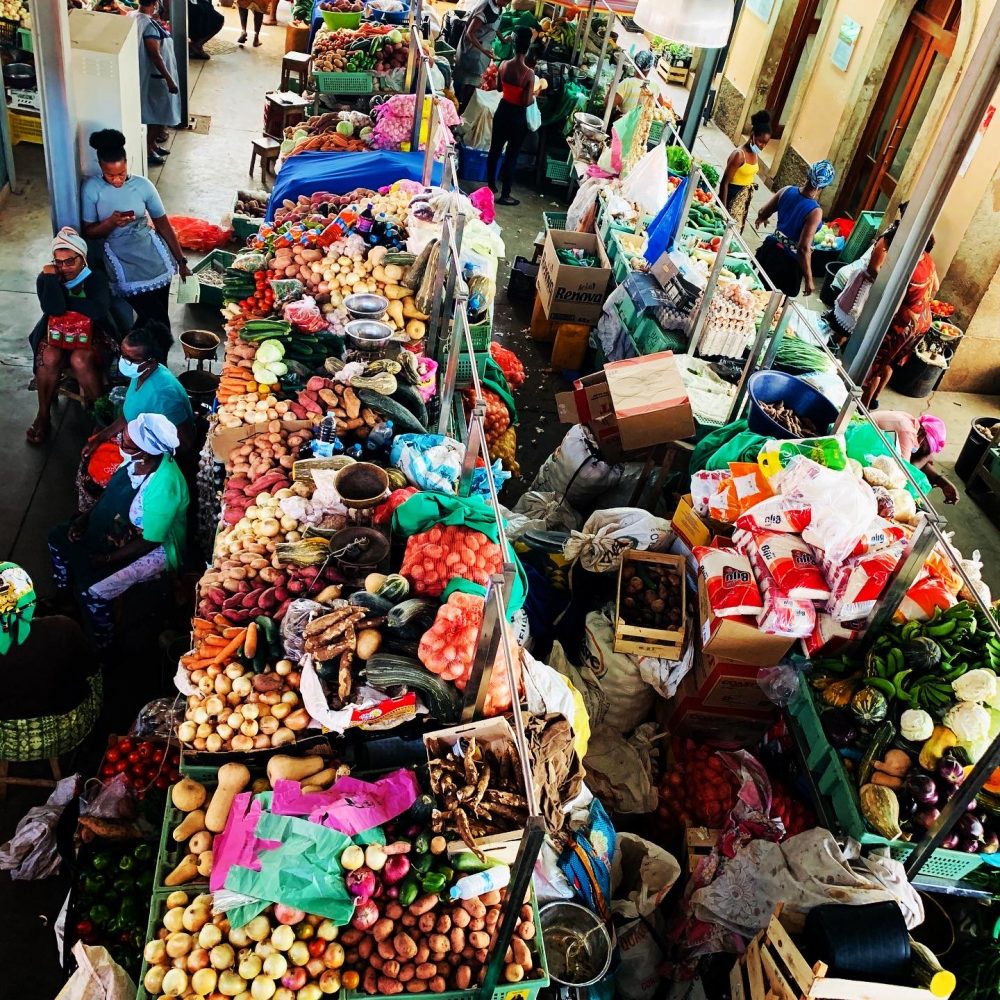
Cabo Verde is seen as a beacon of West African economic stability and growing prosperity. Economic growth and improvement in living conditions has gained widespread recognition, resulting in an increase in development aid. Since 2007, the UN has classified it as a developing nation rather than a least developed country.
Tourism remains the backbone of Cabo Verde’s economy, accounting for approximately 25% of its GDP. More Cabo Verdeans live and work outside of the country with the diaspora contributing at least 20% of GDP to the domestic economy through remittances.
The currency in Cabo Verde is the Escudo (CVE) which is pegged to the Euro at a rate of 1.10 CVE to 1 Euro – although payments made locally in Euro will usually be at 1:1. The country has a good banking infrastructure with multiple national and African banks.
Almost twice as many Cabo Verdeans live abroad (nearly one million) than in the country itself.
Despite having few natural resources and being semi-desert, the country boasts the highest living standards in the region and has attracted thousands of immigrants of different nationalities.
Cabo Verde has been recognized by Ethical Traveler three times (2014, 2015, 2017), returning again in 2020 thanks to its progress in many areas, including environmental issues. The archipelago won the UNESCO-Greece Melina Mercouri International Prize for the Safeguarding and Management of Cultural Landscapes in 2019, and has been identified by International SOS as one of the safest countries to visit in 2021, along with Norway, Greenland, Switzerland and Slovenia.
Like other small island developing nations, Cabo Verde has been severely impacted by COVID-19. Although there was quick action by the government to contain the virus, the economic blow of the pandemic was very high. Whilst tourism is now slowly returning, it is recognised that tourism won’t reach 2019 numbers for at least two years.
History
Before the arrival of Europeans, the Cabo Verde Islands were uninhabited. They were discovered by Genoese and Portuguese navigators around 1456. In 1462, Portuguese settlers arrived at Santiago and founded a settlement they called Ribeira Grande. Today it is called Cidade Velha (“Old City”), to distinguish it from a town of the same name on Santo Antao. The original Ribeira Grande was the first permanent European settlement in the tropics.
In the 16th century, the archipelago prospered from the Atlantic slave trade. Pirates occasionally attacked the Portuguese settlements. Francis Drake twice sacked the (then) capital Ribeira Grande in 1585. The town declined in importance after a French attack and Praia became the capital in 1770.
The decrease in the slave trade in the 19th century resulted in an economic crisis and Cabo Verde’s early prosperity waned. However, the islands’ mid-Atlantic position made Cabo Verde the perfect location for re-supplying ships. Mindelo, the capital of São Vicente became an important commercial centre because of its excellent harbour.
Until 1879, Cabo Verde was part of the Portuguese Guinea and in 1951 Portugal changed
Cabo Verde’s changed its status from a colony to an overseas province in an attempt to blunt growing nationalism. Independence for the archipelago finally occurred in 1975, won by the African Party for the Independence of Cabo Verde (PAICV) who ruled for many years following independence.
The one-party state was abolished on 28 September 1990. The first multi-party elections were held in January 1991 with MpD (the Movement for Democracy) winning the majority of seats in the National Assembly, defeating PAICV with 73.5% of the popular vote.
MpD remained in power for the next decade before the vote turned in favour of PAICV in 2001.
MpD President Jorge Carlos Fonseca led the country from 2011 was re-elected in the 2016 election. MpD have remained in power since, including the recent 2021 elections.
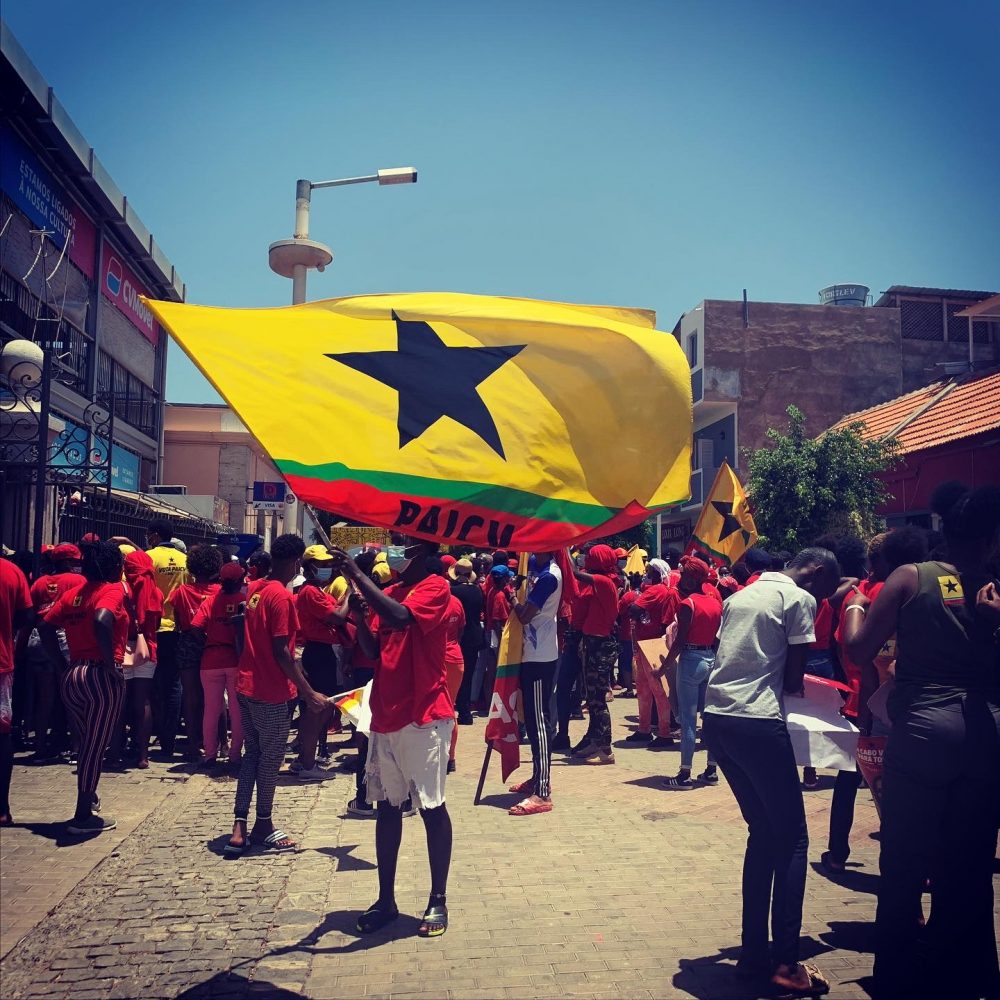
Language
Cabo Verde’s official language is Portuguese which is used in most formal situations such as school, government and in the press. Creole (Kriol or Kriolu) is the language used by most on a daily conversational basis and each island has its own variant.
The majority of Cabo Verdans are Catholic. Cabo Verdeans are a people of mixed ancestry – African (free or slaves), Portuguese, Italian, French and Spanish. 70% of the population is mixed race.
Culture
The culture of Cabo Verde is characterized by a mixture of European and African elements. The Cabo Verdean people are known for their musicality, incorporating African, Portuguese and Brazilian influences. The national music is morna, started in Boa Vista, a melancholy and lyrical song form sung in Kriolu. Cesaria Evora was the best-known singer of Cabo Verde and was known as the ‘Queen of Morna’. Funana started in Santiago, and prior to Independence it was frowned upon as being ‘too African’.
Dance forms include the morna, the coladeira, the Cabo Verdean version of the zouk from Guadeloupe called Cabo love, the funaná (a sensual mixed Portuguese and African dance), the batuque dance, and the Cabo Zouk.
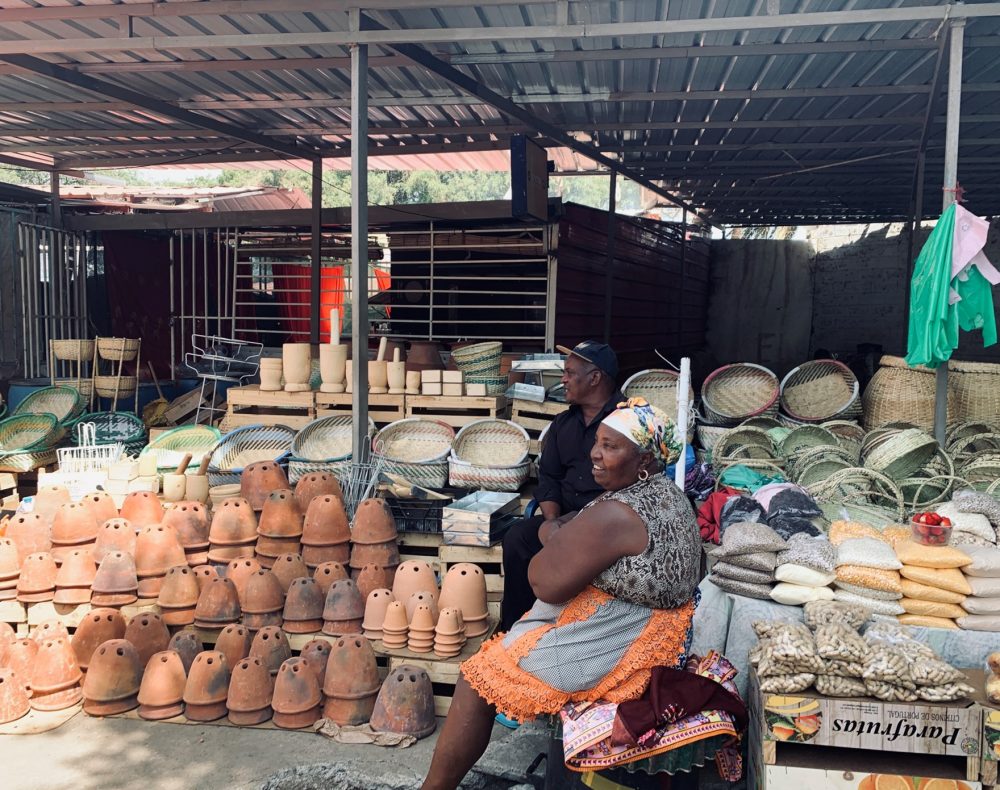
Arts and crafts vary from island to island – Boa Vista, Maio, Sal and Santiago are well known for their handmade pottery, Fogo carves houses out of lava, and basket-weaving is popular.
Food & Drink
The cuisine of Cabo Verde is a West African cuisine largely influenced by the Portuguese, Southern and Western Europeans. Staples include rice, beans and potatoes. Bananas and papaya are fruits found all year round, with others depending on the seasons such as mangos and melon. There is fresh fish in abundance – tuna, wahoo, garoupa to name but a few. Octopus, lobster, goose barnacles and buzios (conch) are frequently seen on restaurant menus.
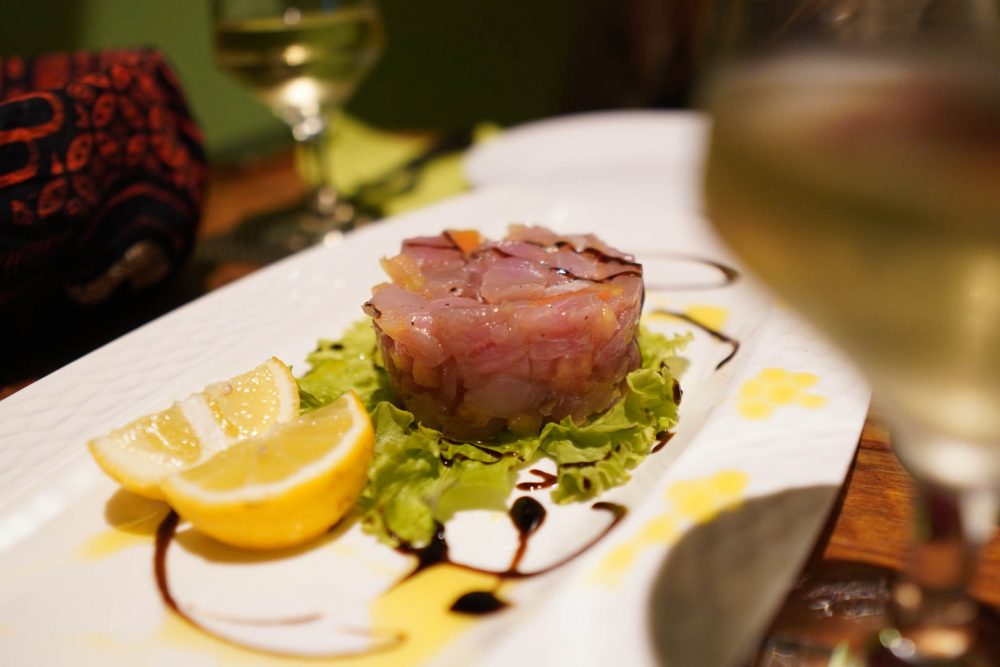
Cachupa is the national dish, a slow cooked stew made of corn, beans, vegetables, meat or fish, and then eaten the next day fried for breakfast with either eggs or fish.
Grogue is the national alcoholic drink made from sugar cane in a trapiche and can be mixed with molasses and lime to create ‘ponche’. Grogue is also used to make the Brazilian inspired caipirinha, mixed with sugar, crushed ice and lime. There are a number of wineries making Portuguese-style wines which have traditionally focused on the domestic market and have recently been met with some international acclaim. Chã is produced on Fogo, cultivated in the caldera of the active volcano.
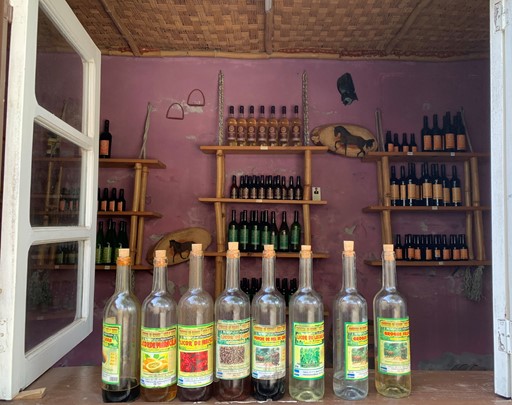
Things to do
Warm tropical waters enable boardshorts and bikinis year-round – with kiting, windsurfing, SUP, surfing, canoeing, sailing, diving, snorkelling in abundance. Constant trade winds from the north-east blow from October/November through until April/May providing consistent condition for kite and wind surfers. The islands of Sal and Boa Vista have modern water sports centres with the latest gear and professional instructors.
Cabo Verde also has plenty to offer the hiker. Santo Antao has incredible mountain hiking trails in amongst impressive scenery. The organised hikes up Fogo’s active volcano, Pico do Fogo, not to be missed.
Bird watching – Cabo Verde is home to several rare breeds of African birds including the lago sparrow, the raso lark, Bourne’s heron and Alexander’s swift. The islands are an important breeding area for sea birds including the Cape Verdean shearwater. Bird watching tours can be found on many of the islands.
Whale watching – Humpback whales come to the waters around Cabo Verde to give birth and it is possible to take a whale watching boat trip to see them. The best time to see whales is between February to May.
Turtles – between the months of July and September loggerhead turtles lay their eggs on beaches around Cabo Verde. The local nesting population of loggerhead turtles in Boa Vista is the third largest in the world. It is possible to see the turtles laying their eggs at night on the beach and see the baby turtles after hatching.
Fishing – there are many opportunities to go fishing while in Cabo Verde, with a wide variety of fish to catch, from tuna, blue marlin, garoupa, wahoo. It is also possible to fish from the beach, catching mullet and sea bream. There are many tour companies organising deep sea fishing trips.
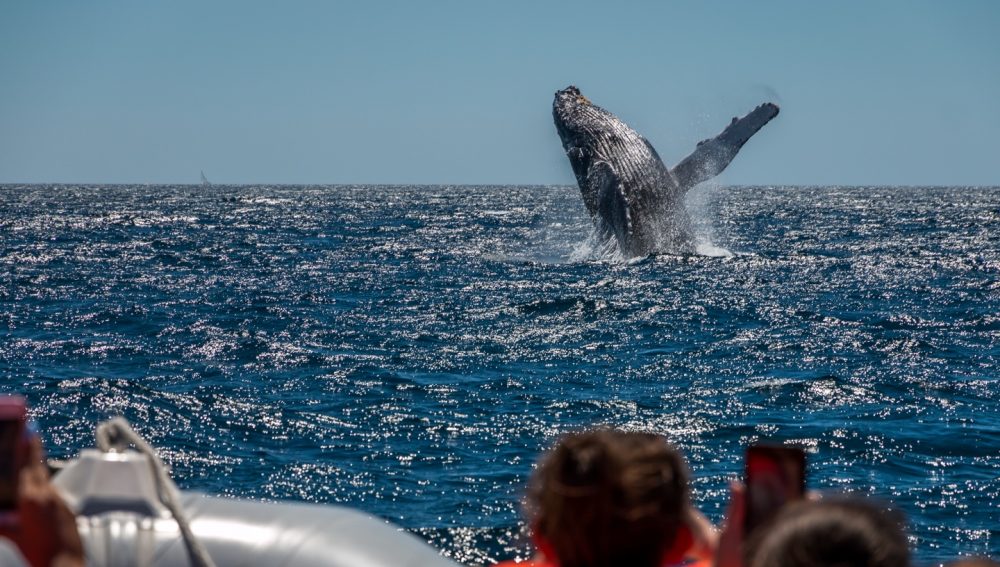
Beaches – Cabo Verde is a mecca for the beach lover. Be it sweeping white sandy beaches or black volcanic sand, Cabo Verde has it all. Head to Sal, Boa Vista or Maio for miles of uninterrupted beautiful beaches.
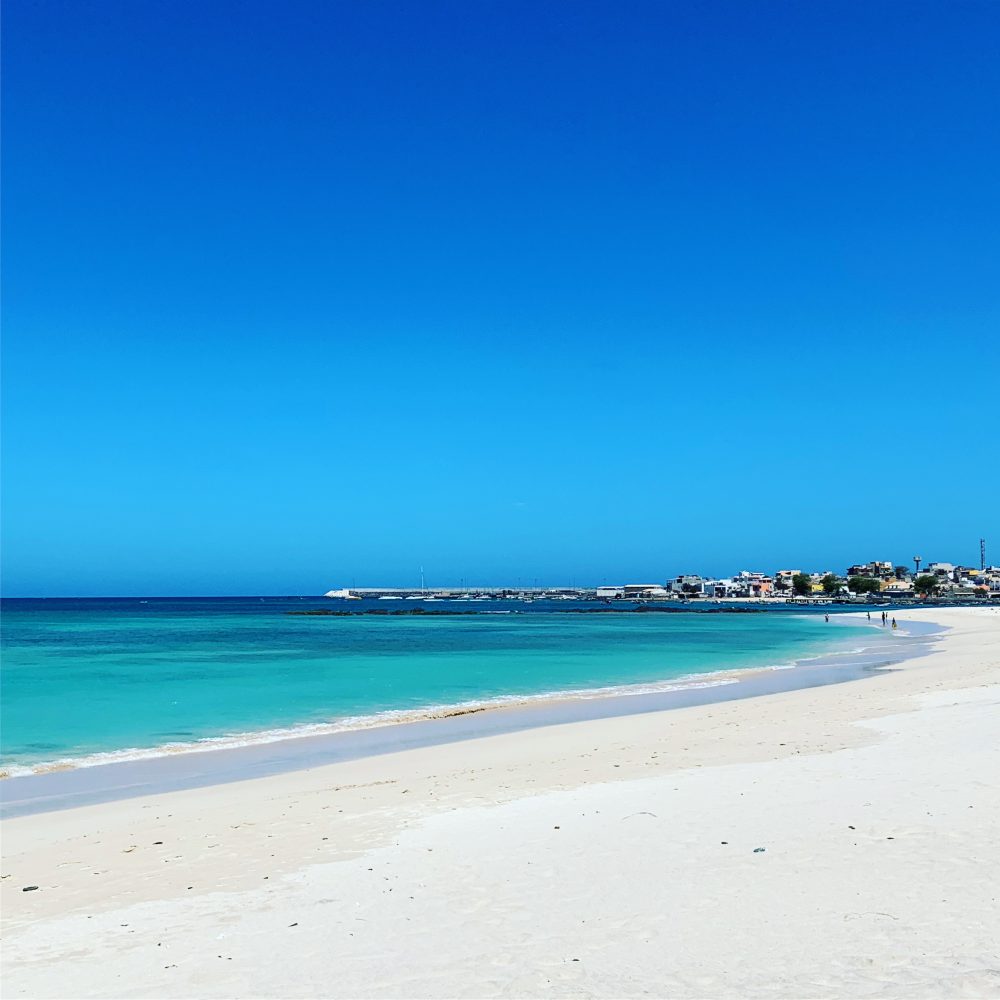
Internet
Fast, reliable internet is critical for remote working. Cabo Verde receives high quality subsea internet via two main links (one from Europe, and the other from USA). These cables connect each island in loop – providing dual redundancy – if there is an issue with one cable, the traffic can be re-routed in the other direction. The country is also in the midst of a national fibre optic rollout.
GoRemote works with CV Telecom to ensure GoRemote apartments and workspaces are equipped with the best WiFi available. Either fibre of 4G mobile router based. We use the best routers and unlimited data packages.
Our network of coworkspaces are equipped with superfast fibre at 80/40mbps. We have mesh wifi in our Sal and Boa Vista workspaces and 4G mobile back up (which we have never had reason to call upon).
We also make available to rent 4G dongles on unlimited data packages so you can work from anywhere. The speed test shown is achieved with the GoRemote 4G dongle on Boa Vista in November 2021.
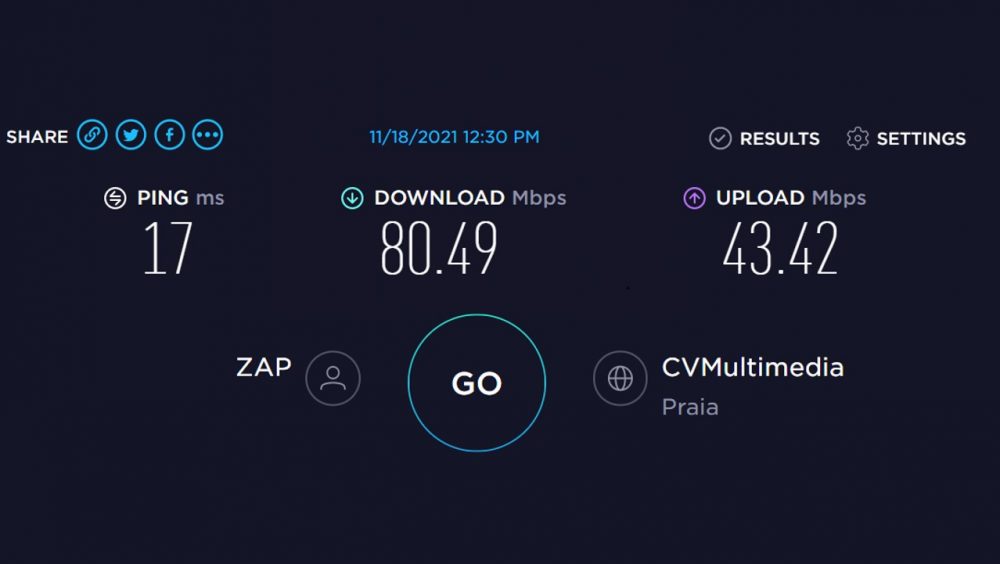
Workspaces
Coworking in Cabo Verde is a relatively new thing. Until recently the only workspaces were to be found on the main island of Santiago.
GoHub has created a national network of workspaces – which can be booked online. This platform brings together all workspaces in Cabo Verde – with coverage of six of the nine islands (Sal, Boa Vista, Sao Vicente, Santiago, Fogo, Maio).
The newest and most modern workspaces are to be found on Boa Vista and Sal. Opened in December 2022 they are equipped to the highest standards and rival workspaces found in London or New York.
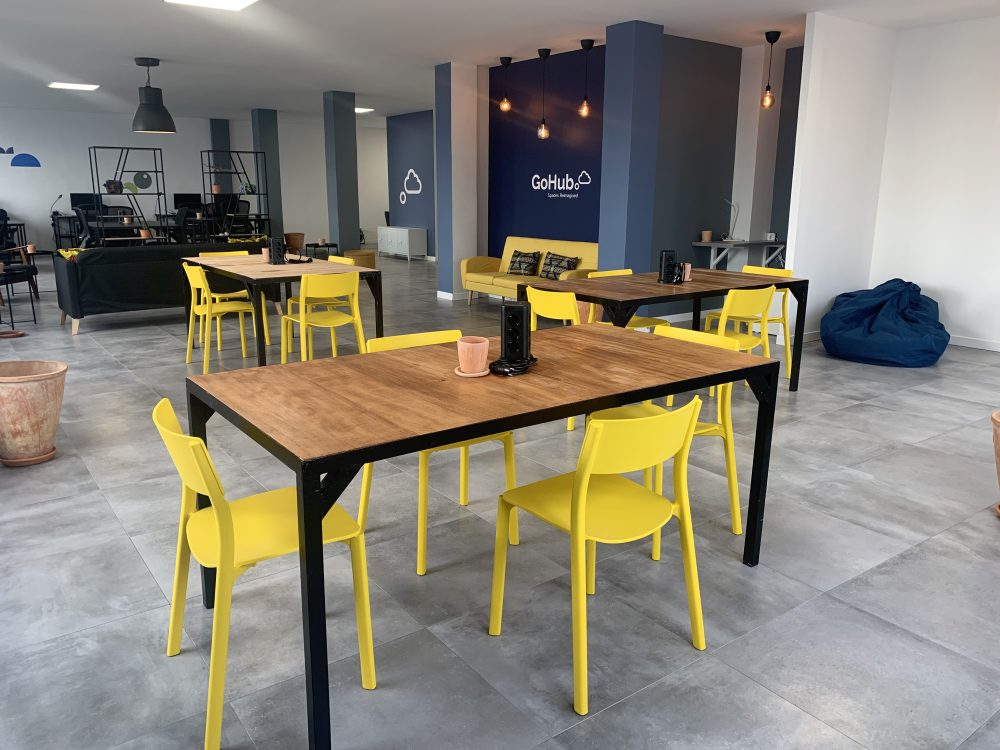
Visas & tax
Cabo Verde operates a dedicated visa programme for remote workers. This provides an initial 6-month visa, extendable to 12 months for those meeting the criteria. The programme waives income tax for remote workers during their stay. The visa should be applied for in advance of arrival.
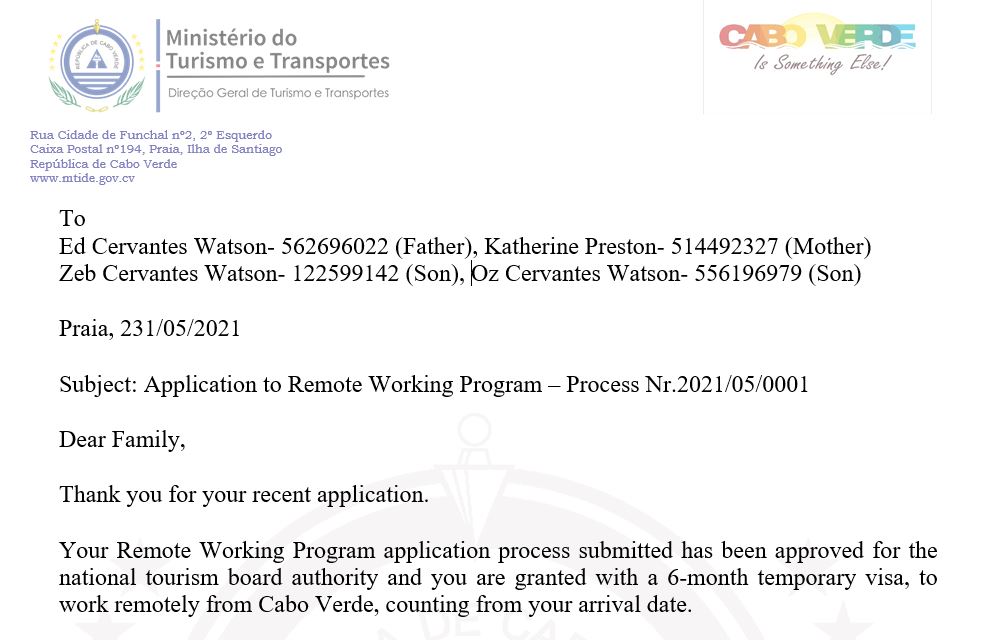
Visitors intending to stay for less than 3 months typically choose to enter Cabo Verde on a standard 30 day EASE entry which is extendable to a 90 days tourist visa in country for a payment of 25 euros. GoRemote provides visa support before arrival and in country.
Travel and Transport
Cabo Verde is under four hours from Lisbon, and just six from London, Manchester, Birmingham, Paris, Amsterdam and many other European hubs. Sal (SID) and Boa Vista (BVC) are particularly well served with frequent direct connections for as little as 100 euros one-way.
Regular internal flights operated by Angolan carrier BestFly connect the archipelago, whilst fast catarmarans and slower roll on roll off ferries sail between islands. Boat tickets can be purchased online from CV Interilhas.
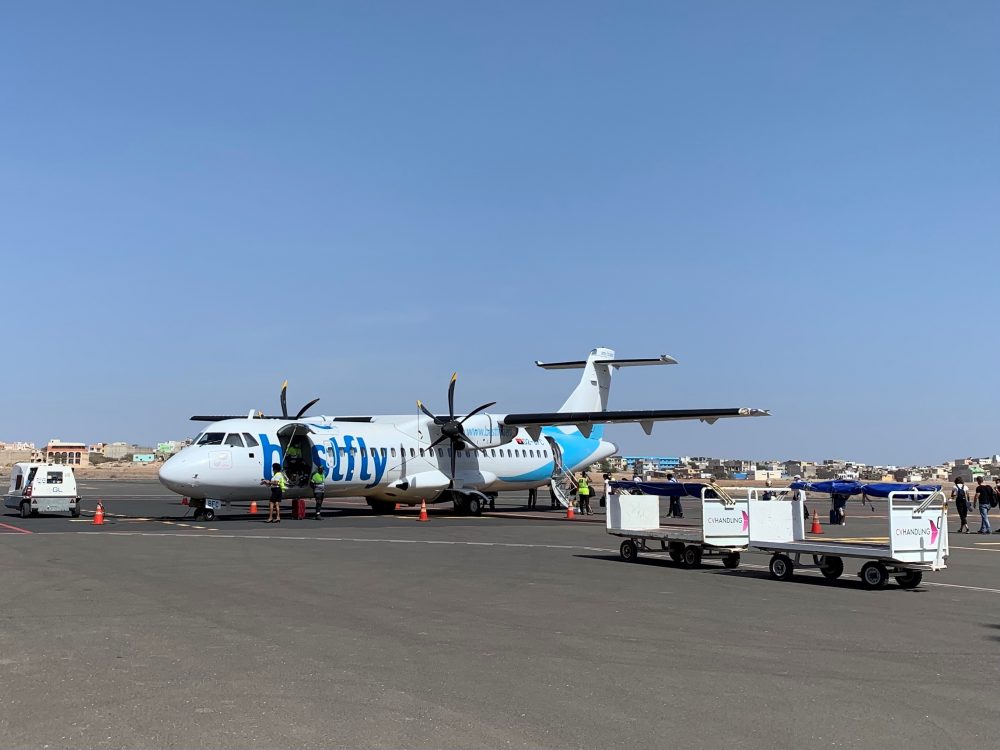
Getting around
Travel is cheap, plentiful and safe. On individual islands taxis or picks-ups (Aluguers) are in abundance. With short trips around town typically 200CVE (2 euros), airport transfers of up to 10km 1,000 CVE (10 euros) and full day private excursions from around 6,000 CVE. GoRemote provides free airport transfers as well as a half day acclimatisation tour on arrival.
It is easy to hire a quad bike or car/pick-up truck. GoRemote partners offer exclusive, discounted monthly rentals. Roads on some of the islands are tarmac and very smooth, but on others they are traditionally handmade using cobblestones and can often be bumpy. There are plenty of inexpensive buses to travel between towns and villages – usually full of passengers and baggage.
COVID-19
Cabo Verde’s effective pandemic management, testing availability and vaccine rollout has led to it reporting some of the lowest incidence rates and deaths amongst developing nations.
There are currently (01 Jan 2023) no COVID related entry requirements or in country restrictions.
Accommodation
Rental properties are plentiful across all nine islands. Quality and price varies. Sal has a large inventory of apartments – typically at higher prices due to the strong vacation rental market. On Boa Vista equitable apartments can be as much as 25-33% cheaper. Sao Vicente sits in the middle with high demand from Cabo Verdeans seeking long stay rentals.
Our sister company GoRemote works only with providers who understand and are committed to the demands of remote workers. They negotiate significantly better pricing for mid-stay rentals than can be found on AirBnB and other booking platforms. They also ensure the apartment is remote first with the best wifi available (fibre or 4g at 20mbps+), decent self catering facilities and home office workspace.


